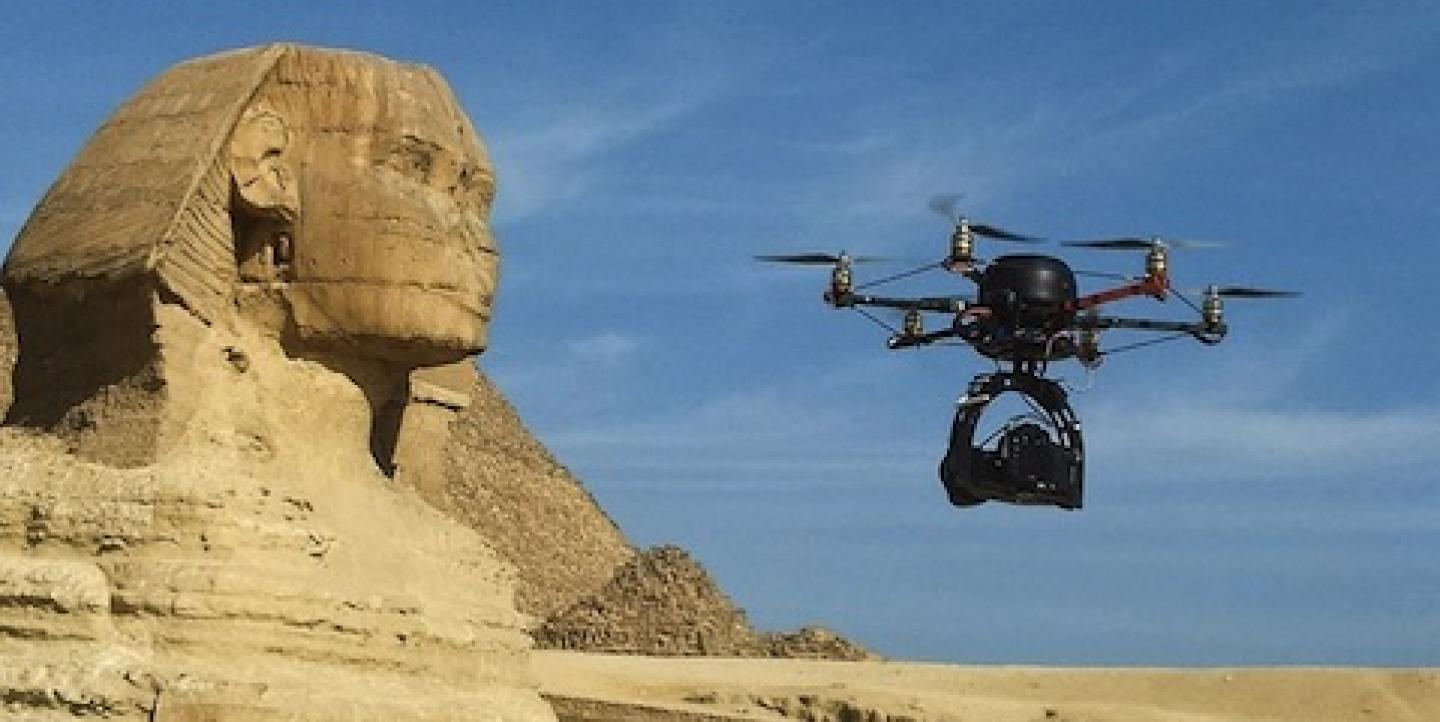The photographers at AirPano weren't even sure what "drone journalism" was -- until their spectacular shots of a protest in Moscow were picked up by news outlets around the world as an example of this growing trend.
When tens of thousands of Russians went to Bolotnaya Square in Moscow to protest election fraud, AirPano sent up a remote-controlled Hexacopter to take pics showing the scale of the crowd.
Despite the media attention, the photographers at AirPano consider their project artistic rather than news-oriented. This group of photographer-enthusiasts, based in Moscow, has traveled to more than 70 locations around the world. They specialize in 3D-panoramic photography shot from the air. A breathtaking example of their work with the unmanned aircraft: a team just returned from Egypt.
IJNet asked founder Oleg Gaponyuk of AirPano and copter pilot and engineer Stas Sedov about the challenges of taking flight and the inevitable crashes.
IJNet: Tell us a bit more about your project.
Oleg Gaponyuk: We shoot spherical panoramas in the air and do it beautifully. Everyone who looks at them enjoys a real bird's-eye view, as if they had wings and took to the sky. A while ago, we learned to shoot spheres on the ground. Back then, it was still a novelty used by progressive photo enthusiasts – it required a tripod, a special panoramic head, sufficiently deep knowledge in shooting and then gluing together the successive shots properly.
Our project is funded by participants. Fortunately, almost all of us are photographers and travel around the world a lot anyway; we just have to remember to shoot our panoramas while we're there. One of the first major investments [we made] was $1,000 for website development.
IJNet: What kind of equipment do you use to get those panoramic shots?
Stanislav Sedov: We use a Hexacopter, i.e. a six-engine aircraft. To control it, we use a standard radio remote control. I have heard about the toys controlled by an iPhone, but that's not an option for us. Our equipment is too expensive to be trusted to a phone.
For those interested in assembling a copter, I'd recommend the website Microkopter. It has a library of materials on the topic, a forum and a parts shop. You can buy a ready-made copter, or purchase a kit and make the device yourself. I bought electronic components and assembled the frame with materials from a hardware store. I didn't like the fragility of the original frame, which wasn't suitable for flying with a heavy camera. Ultimately, this was the right way to go. We quickly got rid of vibration issues and made it collapsible.
IJNet: How do you get the shots?
Stanislav Sedov: I usually work with a professional photographer. Our roles are as follows: I run the hexacopter and the photographer controls the suspension with the camera and tells me where to go. Our unit is equipped with a transmitter and video camera, so the photographer always sees what the camera shoots in real time through a monitor, either hand-held or on a tripod.
During the flight, if all goes well, the team leader acts as photographer. If something unexpected comes up, the photographer steps aside.
We pay a lot of attention to safety issues before each flight. Crashes can happen.... All of our crashes are caused by human error. As a rule, our errors involve miscalculating flight time – the battery goes dead and the device crashes.
IJNet: Who are your customers?
OG: A number of 3D studios and design companies use our aerial panoramas for customer demonstration. It's cheaper than making a "live" recording of this technique.
IJNet: What challenges do you face?
O.G: A frequent challenge is getting permission to shoot. Often officials are so bureaucratized that to get permission to shoot is impossible for a mere mortal; we have to wait months for a response. Fortunately, there are also forward-thinking leaders. We show them our website, explain that the project is nonprofit, that we don't make money from it, and then we are allowed to shoot and even get an accompanying guide.

